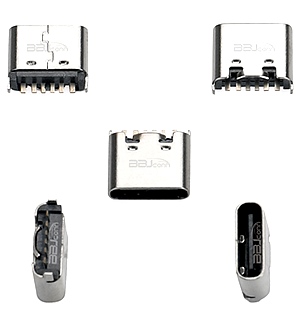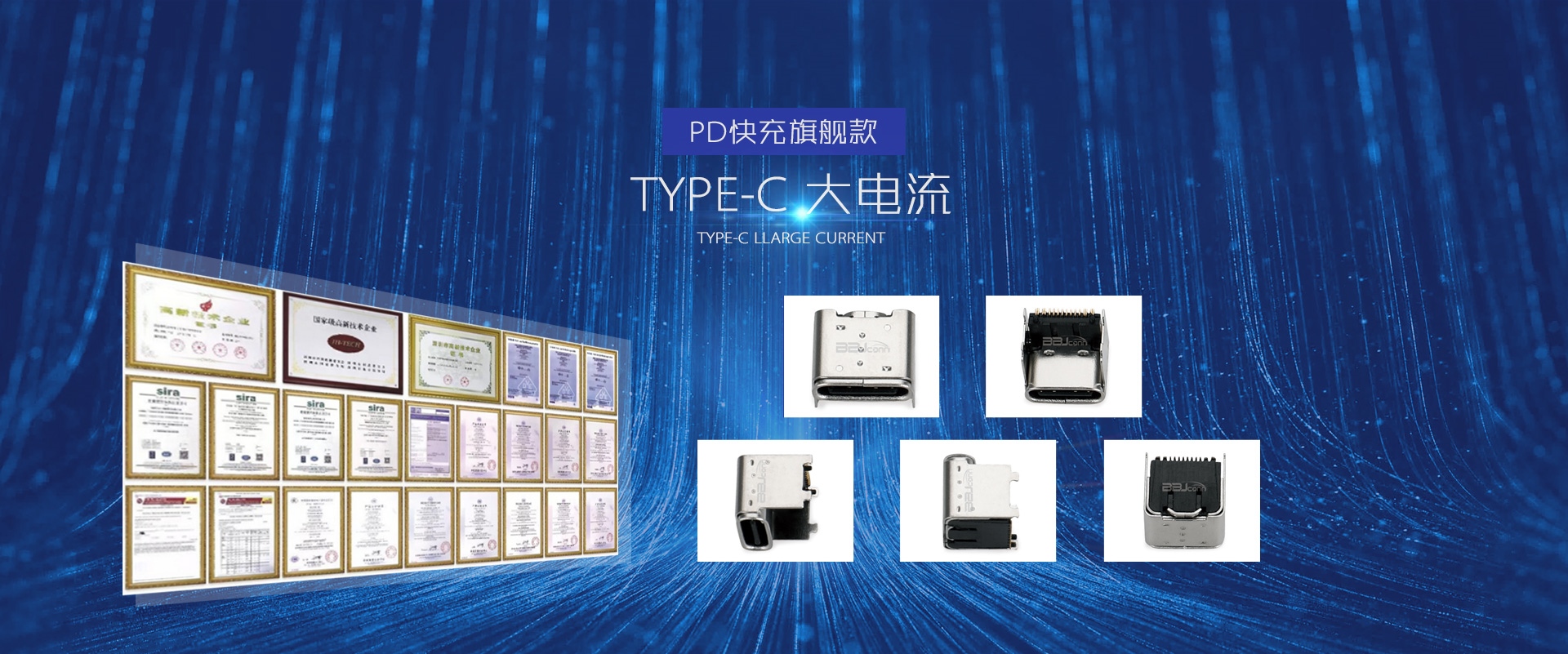Comprehensive analysis and optimization plan of Type-C interface stamping production process
Type-C interfaceAs one of the interfaces widely used in modern electronic equipment, its small size and high efficiency make it widely used in mobile phones, laptops, chargers and other equipment. In the production process of Type-C interface, the stamping process is of utmost importance. A crucial link. This article will analyze the Type-C interface stamping production process in detail and discuss the key technologies and optimization solutions in each link.
Overview of stamping process for Type-C interface
The stamping process of Type-C interface mainly includes multiple links such as mold design, material selection, stamping forming and subsequent processing. The entire stamping process not only requires high precision of equipment, but also puts forward high requirements on the technical level of operators. Type-C interface The core goal of the stamping process is to ensure precise control of various dimensions so that the interface can accurately match the equipment and ensure electrical performance and service life.
Type-C interface mold design and development
The design of the stamping mold for the Type-C interface is a key part of the production process. The design of the mold not only needs to consider factors such as the shape and size of the interface, but also needs to pay attention to the durability and precision of the mold. Type-C interface molds usually use high hardness Steel to ensure that it can withstand greater pressure and friction during high-speed stamping, thereby extending its service life.
In addition, the stamping mold for the Type-C interface needs to be customized according to the actual needs of the product. For example, different brands or models of Type-C interfaces may be structurally different, so the mold needs to have certain adaptability. To meet the production needs of various specifications.

Selection and processing of Type-C interface materials
The material selection of the Type-C interface has a direct impact on its performance. Commonly used materials include copper alloy, aluminum alloy, etc. These materials have good electrical conductivity, corrosion resistance and mechanical strength. During the stamping production process of the Type-C interface, The selection of materials must ensure that they are not easily deformed during high-speed stamping and have good electrical conductivity and fatigue resistance.
In addition, the material of the Type-C interface also needs to undergo certain surface treatment. For example, the surface gold plating process can improve the corrosion resistance and conductivity of the interface, ensuring that it still has good electrical contact performance after long-term use. Through reasonable Material selection and surface treatment can effectively improve the overall quality and service life of the Type-C interface.
Type-C interface stamping forming process
The stamping forming of the Type-C interface is the core link in the entire production process. In this process, the stamping equipment impacts the material with high pressure through the mold to shape it. The Type-C interface usually requires multiple stamping processes to complete. , from preliminary cutting, drilling to final shaping, each step requires strict process control.
In the stamping forming process, the accuracy of the equipment and the control of stamping pressure are crucial. If the stamping pressure is too high, it will cause the material to deform or break, and if the pressure is too low, the size of the finished product may not meet the requirements. Therefore, stamping equipment needs to be maintained regularly. and calibration to ensure accurate control of stamping pressure.
Type-C interface subsequent processing and quality inspection
After the Type-C interface is stamped, it usually needs to undergo subsequent processing. These processes include deburring, marking, surface gold plating and other processes. Deburring is to remove the sharp edges generated during the stamping process and ensure the safety of the interface. and aesthetics. The marking process is to mark the brand or other necessary information on the interface.
Quality inspection is an important link in the production process of Type-C interface. After production, each Type-C interface needs to pass strict inspection to ensure that it meets international standards and product requirements. Common quality inspection items include dimensional inspection, Electrical performance testing and durability testing, etc. Through this series of testing, unqualified products can be effectively screened out to ensure that every Type-C interface sold on the market has excellent performance.
Optimization of Type-C interface stamping production process
With the continuous changes in market demand, the production process of Type-C interface also needs to be continuously optimized. The optimization direction mainly focuses on improving production efficiency, reducing production costs, improving product quality, etc. First of all, by introducing advanced automation equipment, we can Greatly improve the efficiency of stamping production and reduce Manual operation improves the stability of the production line. Secondly, the use of high-precision stamping molds and materials can further improve the dimensional accuracy and electrical performance of the Type-C interface. In addition, through a refined quality management system, product defects can be effectively reduced Reduce rework rate and scrap rate and reduce production costs.
The stamping production process of Type-C interface is a precise project, involving many links such as mold design, material selection, stamping forming and subsequent processing. The optimization and improvement of each link is of great significance to improving production efficiency and product quality. .With the continuous advancement of technology, the production process of Type-C interface will become more and more mature and able to meet more stringent market demands.
